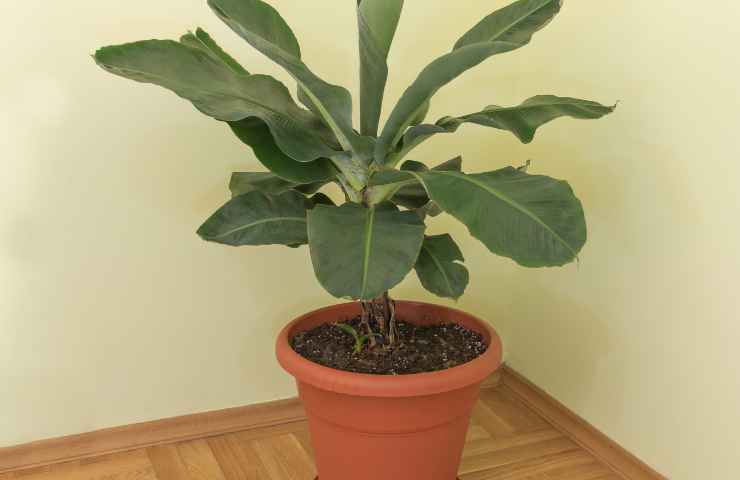
There are many who have chosen to embellish their home with an indoor banana tree . It is a plant that does not go unnoticed due to its size and its large , long leaves that tend upwards: a shrub, therefore, capable of giving interior spaces an exotic and exclusive touch.
Nice to place in the living room, near the sofa or the balcony, in short it could be defined as a real piece of furniture. Ideal, even for those who don’t know what to give to a couple who have just moved into a house or for those who have opened a business. In short, this plant goes well with everything, so what better opportunity to find out more about it?
If the goal is to “adopt” an indoor banana tree then all you have to do is scroll and discover all the tricks so as not to compromise its correct growth. Let’s immediately dispel a myth: due to the climate of the Peninsula, this plant will almost certainly not bear fruit.
How to care for indoor banana trees

In the collective imagination we are led to think that this plant requires only and exclusively high temperatures , but is this really the case? Yes, it loves the heat, but it also adapts well to shorter ones. Here, however, we come into play, as we necessarily have to take care of it and implement some small precautions if we decide to grow it at home like many other plants.
As much light as possible during the summer season, but when the winter season comes , what should we do? Simple, if our banana tree spent the warmest months outside, in October everything changes, the days get shorter and the thermometer values drop dramatically, so our advice is to place it inside.
The new position will make our banana tree appear different, but there is nothing to fear, everything is normal, it means that our plant is reacting to the change. It is not uncommon, in fact, to notice the edges of the leaves being darker or burnt , be careful, it cannot be excluded that all this also occurs when moving between internal and external space. If our plant is placed inside the house, let’s make sure that it doesn’t spend its days in a dark or humid room , let’s place it instead in the brightest and warmest room, but away from heat sources and air currents that could compromise its good health. Avoiding thermal shock is essential.
In summer, however, it is essential not to leave the indoor banana tree for endless hours under the scorching sun, alternating hours of intense light with those of shade . We water the plant frequently during the summer season and less in cold periods, but, above all, we check that the soil is not wet if we want to proceed with drainage .
Are indoor banana trees resistant to the cold?
Let’s now move on to a thorny topic that we cannot fail to consider if we have this plant at home or in the garden, namely how resistant they are to frost and the coldest temperatures . Erroneously, it is quick to say that these plants cannot have a long life if it is cold, in this regard it is better to clarify. In nature there are different varieties and each of them can tolerate the degrees in a different way.
Let’s start with the most resistant ones, here we include Musa basjoo and Musella lasiocarpa , think about it, they can resist up to -15°C. The only advice is to use a good mulch to counteract frost. Musa Blue Java , Musa Thai Black , Musa Helen’s Hybrid and Musa Orinoco resist up to -5°C . Among the least resistant we cannot fail to mention Musa velutina and Musa coccinea which temperatures above 10 °C. It will therefore be enough to place the plant inside the house from mid-October and place it outside in April and that’s it: the indoor banana tree will give beauty to our apartments and gardens.